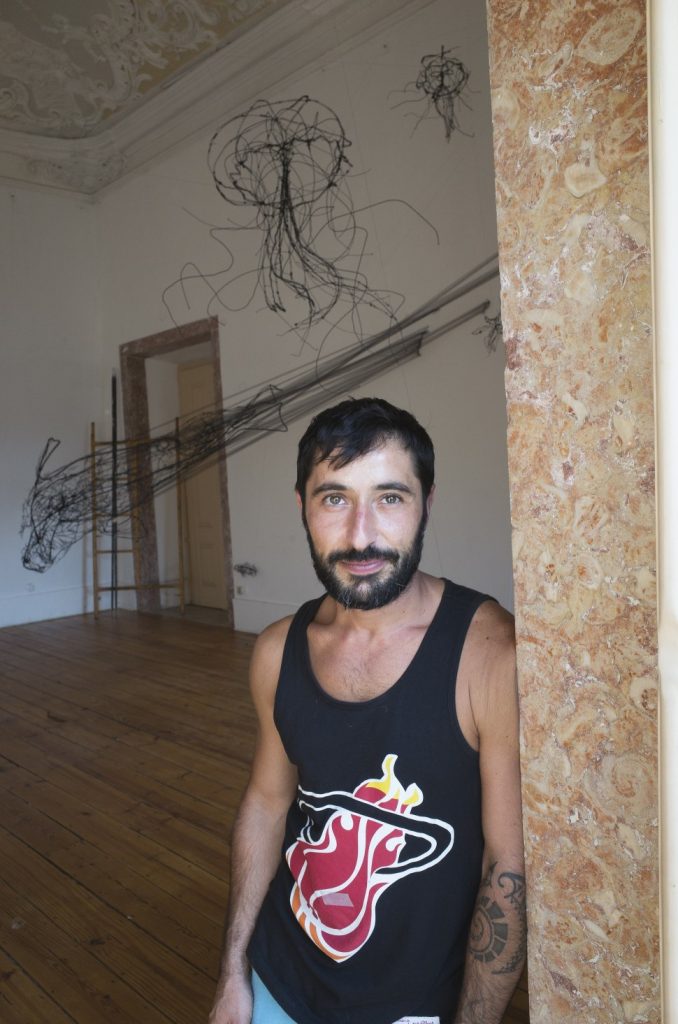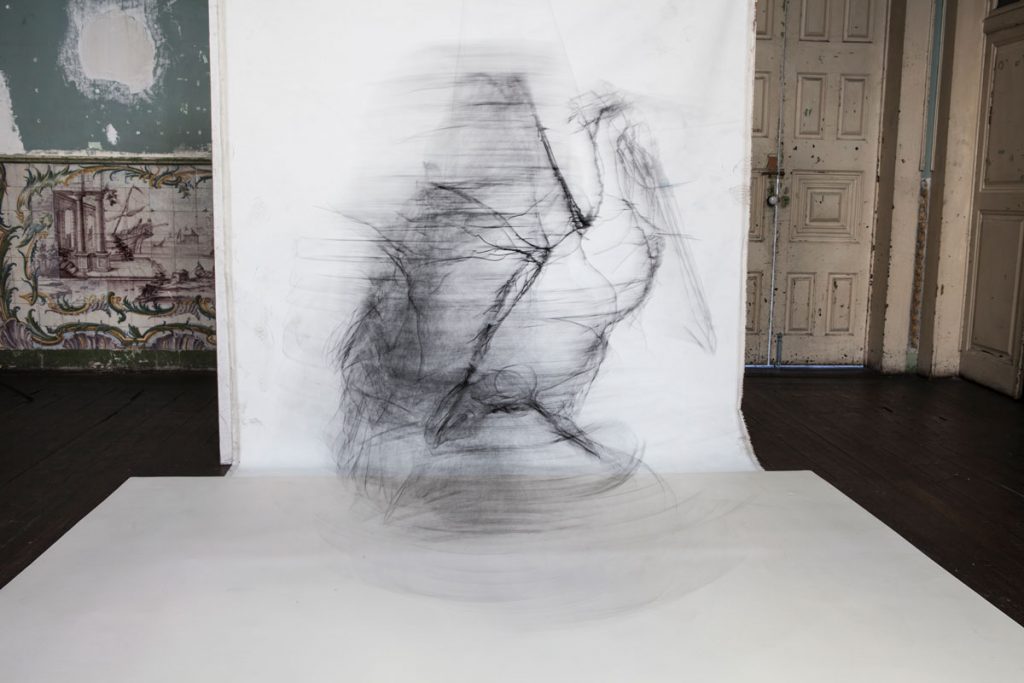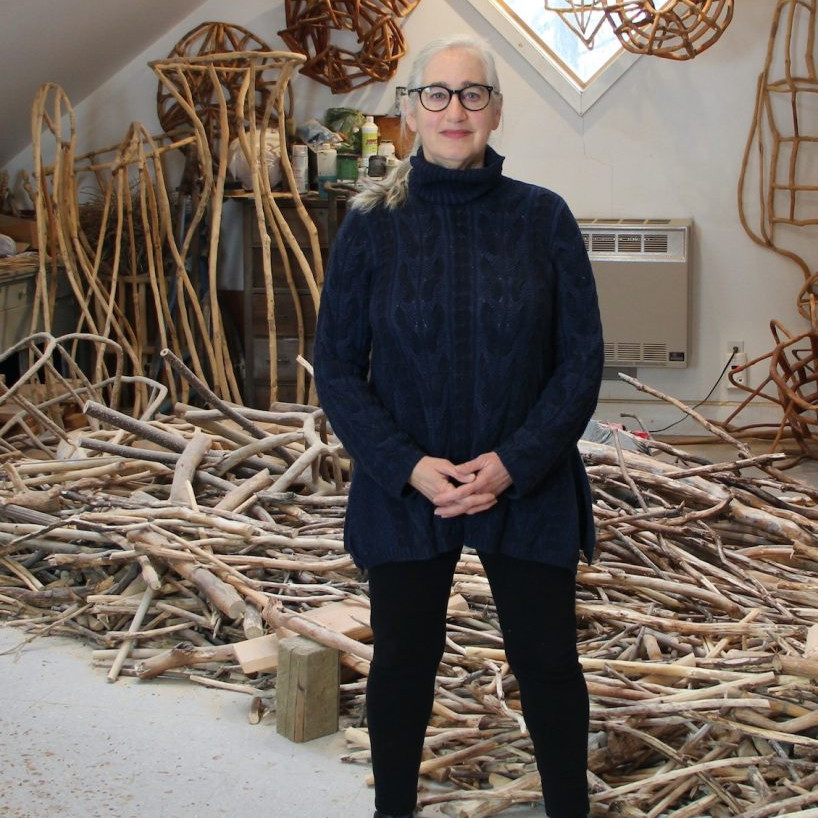David Oliveira Wire Sculptor
Your sculpture is just like a drawing. How did you come to this technique?
I consider my sculptures drawings, or if you prefer 3D drawings. I was searching for a way to draw in the air. Wire offers the resistance and aesthetics I was searching for. I started using wire as the main technique for my work. The wire is a line with different diameters, materials and colours. I use it accordingly in what I want to represent.

You exhibit around the world, take one country that gave your artistic career a huge boost and why?
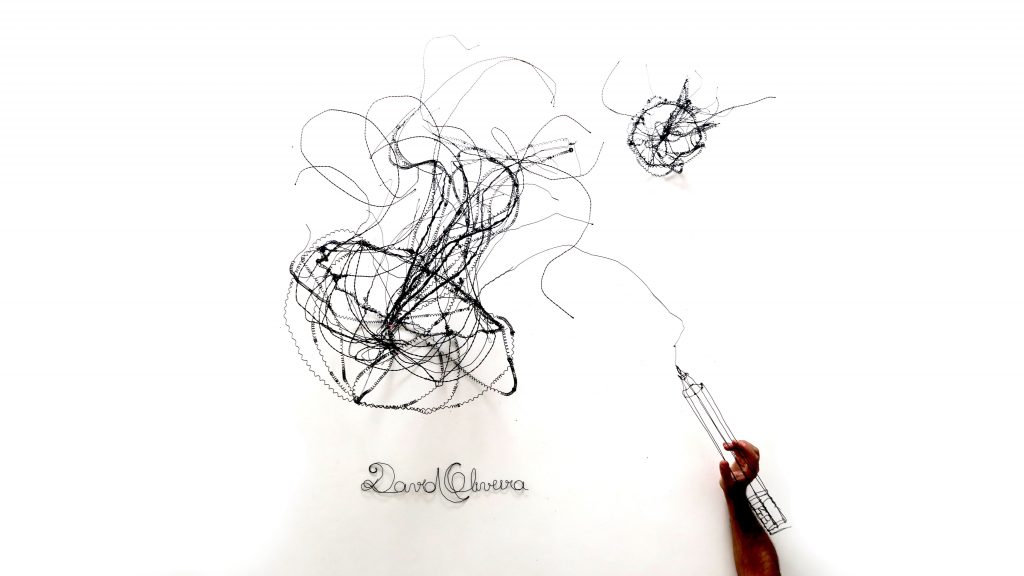 I can´t. I am not even sure if that has existed in, my career. My career has been, step by step. Each work connects with the next one. It was in Portugal that I was given the biggest challenges.
I can´t. I am not even sure if that has existed in, my career. My career has been, step by step. Each work connects with the next one. It was in Portugal that I was given the biggest challenges.
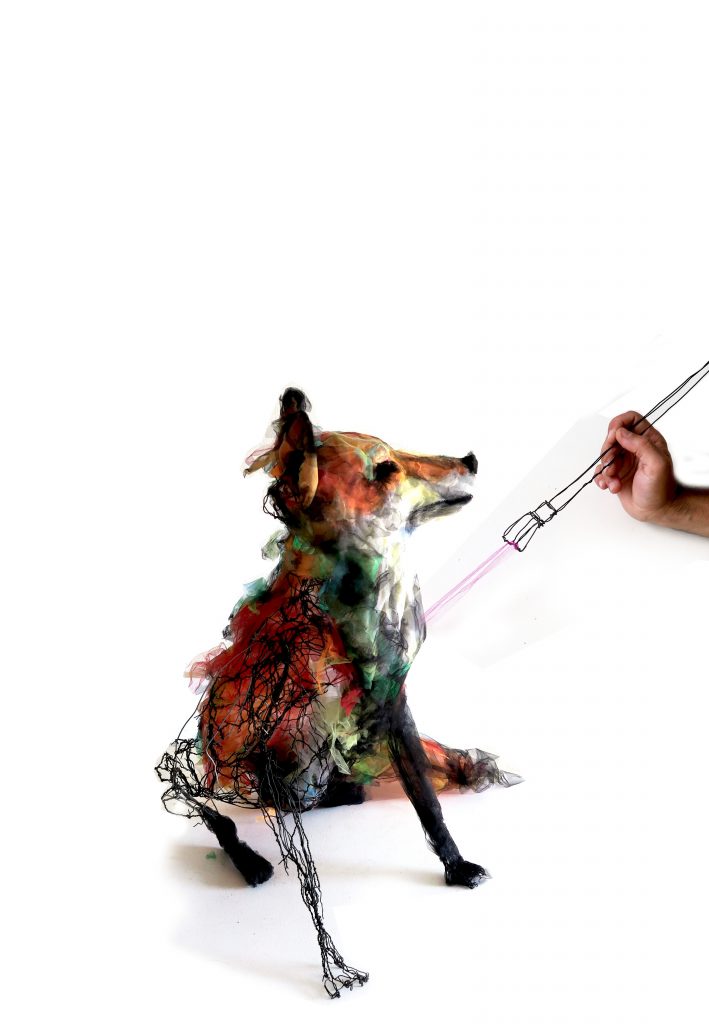
Take ‘Arabian Women’ and discuss.
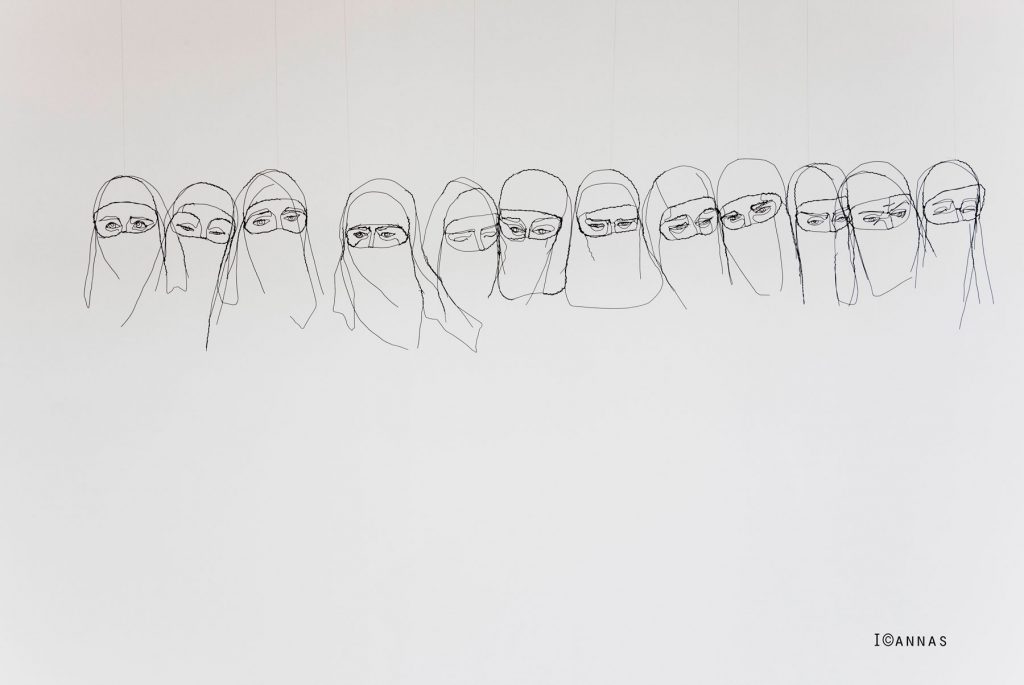
The Burkas piece appeared after my visit to Turkey. Before that visit, I didn´t have much contact with the reality of this life. An Arab woman told me she felt safer behind the fabric. I wanted to represent the shield carried as a second skin. The fabric is embedded in their DNA. This work is hung by being suspended to the wall.
What gauge wire do you use?
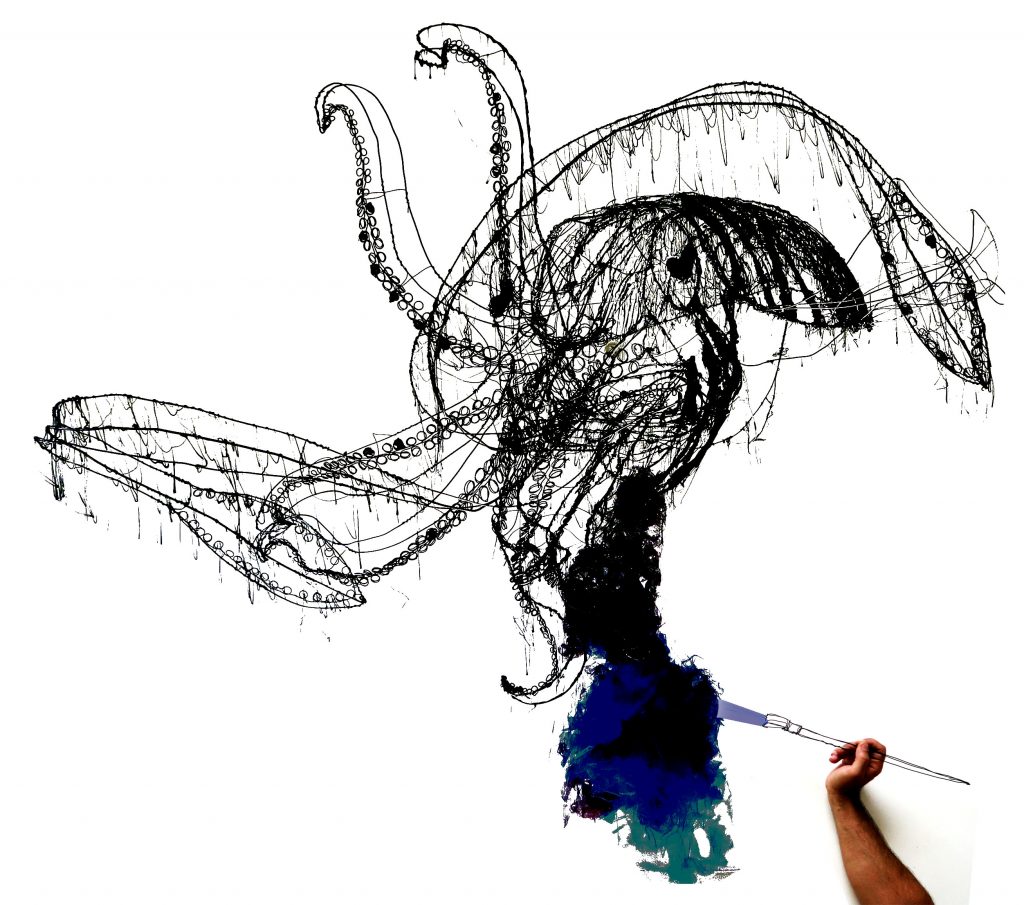
I use several kinds of lines. From galvanized wire to silver, to iron. The gauge is used according to the density of the line I want to represent. Or, according to with its function. Besides being sculptures they are also structures.
Sometimes you incorporate coloured wire. Is this plastic coated?
Why and when do you add colour?
I use several techniques applied in the wire. One of them is a coated velvet applied not just for the colour, mainly because of the feeling (It is warm, cosy, nice to the touch).
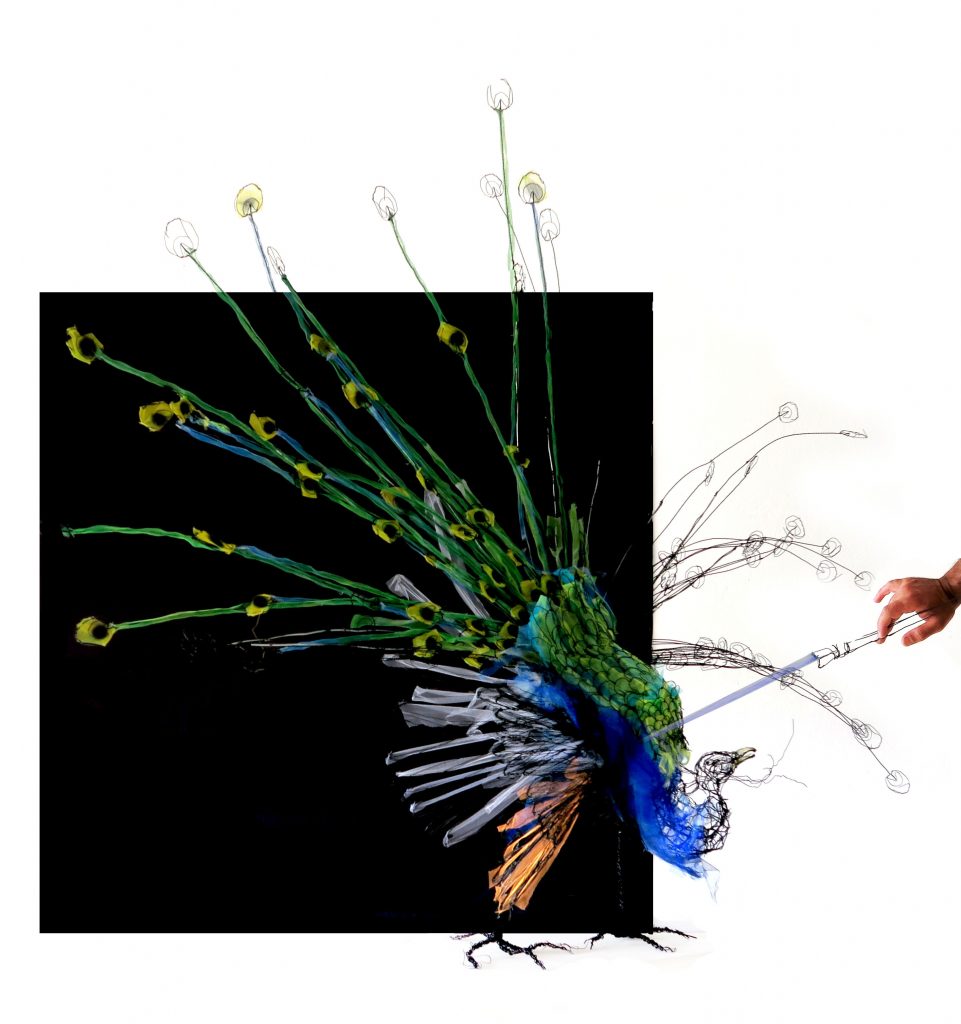 Discuss your technique from inspiration to completion (briefly)
Discuss your technique from inspiration to completion (briefly)
Starts with an idea, an image in my head.
I study the shape I intend to represent, mainly seeing images and movies online.
Then I start directly bending wire until I reach what I want.
After I paint it, black most of the times ( also to protect from corrosion)
The work is then labelled it and is technically filed ( measures, photos, name, year). Then I try to sell it
Can you expand on your portrait and how you have taken it into 3D?
A portrait is made by knowing how a human skull is, understanding and knowing the main facial muscles. I then add elements that will identify it. Mainly the shape and distance of the eyes, shape of the nose, size of the mouth, hairlines, and ears. When you are doing your own, you use photos or a mirror.

Please take us briefly from 2009 till 2019. Discuss both the works and your own artistic journey.
I graduated from university 2008 in ceramics- sculpture. My interest in drawing with wire started with me trying to represent the visible (skin). In 2010 I returned to the university for a postgraduate in drawing and compared anatomy (animals) that I did only the classes, not the tests (incomplete).
In my work, I realise there was a lot of empty space underneath the visible (skin), so I started representing the bones. In 2014 wanted to explore what I could find inside the bones (the energy, the intention, the movement). In 2015 I did a big exhibition called – Total Movement – about how we relate to everything, with all living creatures on the planet. I became a vegetarian also. In 2018 I did this huge exhibition in Lisbon a reservoir of water, with the water museum called – Life by a Thread. This year, in 2019 with End Youth Homeless. I also did a campaign that is travelling around the UK called- Now You See Me. Designed, trying to raise awareness about the young homeless in the UK. I´m back to Lisbon, preparing an exhibition in Casa Dell ‘art Alfama’ to open in mid-July.
Construction image
Take ‘Bougainvilla’ discuss the construction of this work?
In this one, I used pieces of coloured tulle (mesh, net) to give colour to the flowers.
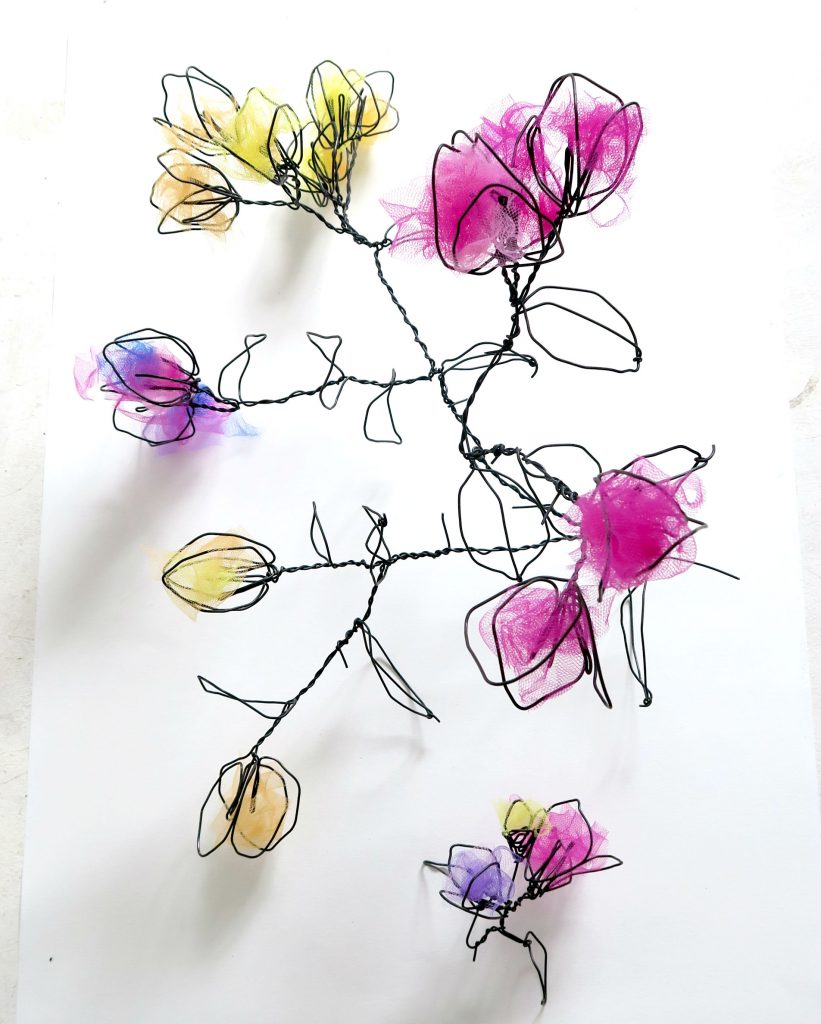
Tell us about the background story of ‘Tortured Man’.
My grandmother was Catholic, so I did a Jesus’ head, she has it above her bed. A client saw the picture and asked me if I could do one for him. I did the one I called tortured man.
Discuss one installation that has given you great joy, both in the production and the final presentation.
In 2012, The TVI, a free Portuguese channel was celebrating 20 years. They invited me to create a work around the theme – time capsule. I created a huge brain that was on stage, behind the presenters, being transmitted on National tv, during the ceremony.
Another was in 2016 I was invited to present my work in Gaeta, Italy. For that, I went there, with my friend a, photographer and first assistant- Sofia Trindade. That was a great production moment… In 2018 for the exhibition at the Reservoir (mother of water das Amoreiras) the place was so high (7m) I had to call my friends to go up the ladder because suddenly I was terrified.

David Oliveira
instagram: davidoliveiraescultura
Deborah Blakeley, Melbourne, Australia
Interview by Deborah Blakeley, July 2019
Think a colleague or friend could benefit from this interview?
Knowledge is one of the biggest assets in any business. So why not forward this on to your friends and colleagues so they too can start taking advantage of the insightful information the artist has given?
Other artists you may be interested in:


